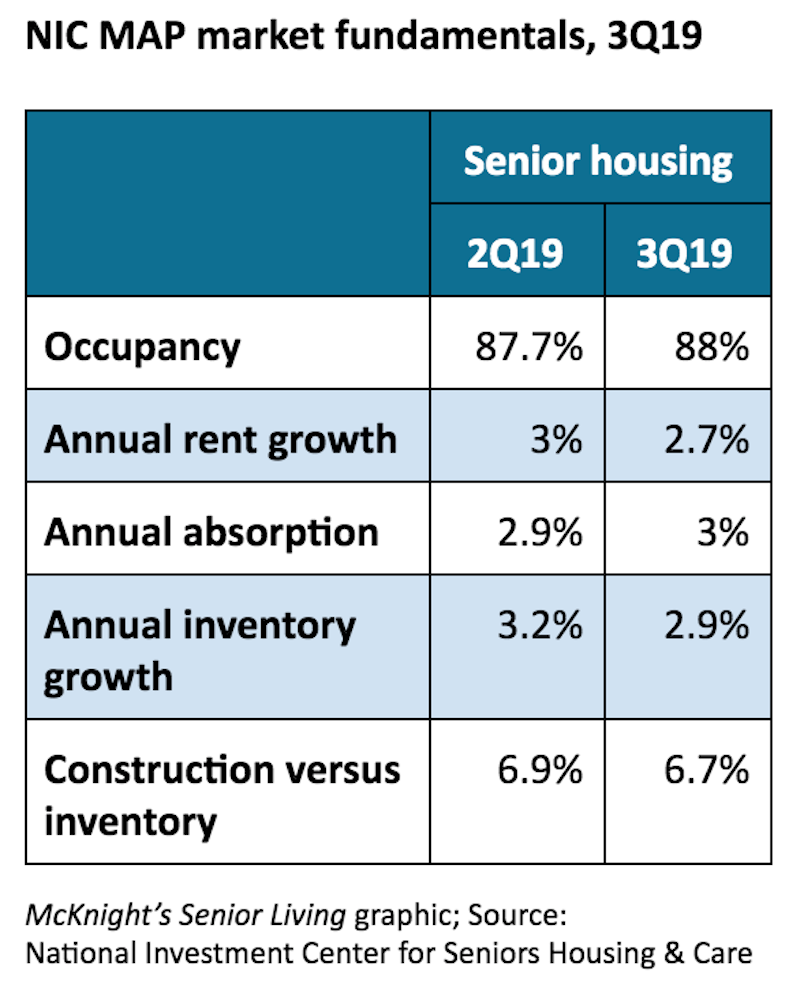
Demand for new senior living (independent and assisted living) units in the third quarter set a record for the highest number in any quarter since the National Investment Center for Seniors Housing & Care began reporting the data in 2006, the organization said Thursday.
Also, construction appears to be slowing, and occupancy inched up, NIC said.
Net new senior living unit demand totaled 4,977 units in the third quarter. At the same time, however, the quarterly change in the number of units added to existing inventory decreased to 3,832, the fewest since mid-2016. The data suggest a possible slowdown in new senior living construction, especially for assisted living, NIC Chief Economist Beth Burnham Mace said.
“This should lay the groundwork for improving sector performance, provided there are no significant hiccups that could affect demand, such as drop in consumer confidence, a crash in the stock market or a broad-based economic recession,” she said.
The 31 primary markets that NIC follows have seen 17,932 new construction starts in the past four quarters, the fewest new starts since 2014, according to the organization. The construction starts represented 2.8% of the total existing senior living inventory, down from 4% in 2018 and 4.6% in late 2017.
Good news for occupancy

Meanwhile, senior living occupancy inched up to 88% in the third quarter, from 87.7% in the second quarter, which was the lowest level in eight years, according to the data released Thursday.
The percentage reflects occupancy figures for independent living and assisted living combined.
“The data suggest strong consumer demand for assisted living and independent living, which supported the overall increase in the national occupancy rate that we’ve experienced,” Mace said.
Assisted living occupancy moved to 85.4% in the third quarter, from a previous record low of 85.1% for the past three quarters, as demand outpaced new inventory growth, NIC said.
Independent living occupancy was 90.2% in the third quarter, up from 90% in the second quarter based on data updated after the last release, but down from the first quarter.
City data are posted here.



